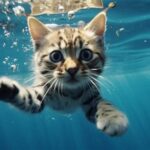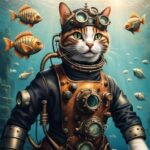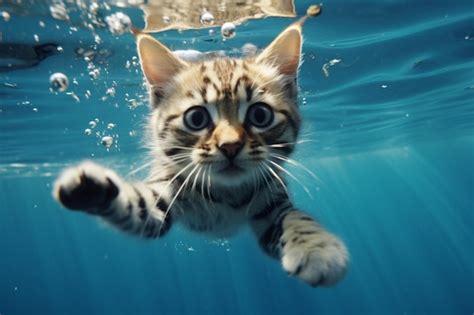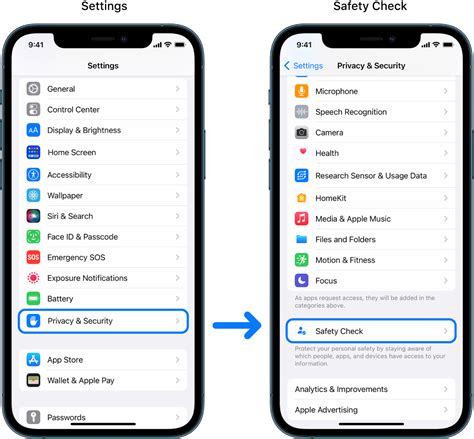
AI-generated videos of cats performing Olympic-level dives are unexpectedly captivating viewers online, transforming a niche fascination into a viral phenomenon. The bizarre yet strangely mesmerizing content has prompted widespread discussion about the capabilities and creative potential of artificial intelligence in generating engaging entertainment.
The unexpected surge in popularity surrounding AI-generated Olympic diving cats stems from the seamless integration of feline anatomy with complex athletic maneuvers. These hyperrealistic animations, created using advanced AI algorithms, depict cats executing dives with precision and grace that defy the limitations of the real world. The videos have flooded social media platforms like TikTok, X (formerly Twitter), and Instagram, garnering millions of views and sparking a wave of user-generated content inspired by the original creations. “I didn’t realize I needed to see cats doing Olympic dives until now, but here we are,” remarked one user on X, encapsulating the sentiment of many who stumbled upon the peculiar trend.
The genesis of the AI-generated diving cat phenomenon can be traced back to the increasing accessibility and sophistication of AI image and video generation tools. Platforms like Midjourney, DALL-E 2, and Stable Diffusion have democratized the creation of realistic and imaginative content, allowing users without extensive technical expertise to generate high-quality visuals from simple text prompts. The combination of this technological advancement with the internet’s well-documented obsession with cats has proven to be a potent formula for viral success.
The allure of these AI-generated videos lies in their novelty and absurdity. Cats, typically associated with graceful but terrestrial movements, are reimagined as elite athletes capable of performing complex dives with seemingly effortless skill. This juxtaposition of the familiar and the fantastical creates a surreal and humorous experience that resonates with a wide audience. The videos often feature slow-motion replays, dramatic angles, and synchronized movements, further enhancing the comedic effect and showcasing the capabilities of the AI algorithms.
Beyond the entertainment value, the popularity of AI-generated diving cats raises important questions about the future of content creation and the role of artificial intelligence in shaping our digital landscape. The ease with which these videos can be produced highlights the potential for AI to revolutionize the entertainment industry, empowering individuals to create and share their own unique visions with a global audience. However, it also raises concerns about copyright, intellectual property, and the potential for misuse of AI-generated content.
The ethical considerations surrounding AI-generated content are becoming increasingly relevant as the technology continues to advance. Issues such as deepfakes, misinformation, and the potential displacement of human artists and creators are being actively debated within the tech industry and among policymakers. The AI-generated diving cat phenomenon, while seemingly innocuous, serves as a reminder of the complex and multifaceted implications of artificial intelligence in our society.
Experts predict that the trend of AI-generated content will continue to grow in popularity, driven by advancements in AI algorithms and the increasing demand for personalized and engaging entertainment. The future of content creation may involve a collaborative partnership between humans and AI, where AI tools are used to augment human creativity and enhance the storytelling process. However, it is crucial to address the ethical and societal challenges associated with AI-generated content to ensure that this technology is used responsibly and for the benefit of all.
The viral success of AI-generated Olympic diving cats underscores the power of the internet to amplify niche interests and transform them into global trends. The videos have not only provided entertainment but have also sparked conversations about the creative potential and ethical implications of artificial intelligence. As AI technology continues to evolve, it is likely that we will see even more unexpected and captivating forms of AI-generated content emerge, challenging our perceptions of reality and blurring the lines between the human and the artificial.
The unexpected explosion of interest in these videos also highlights a crucial aspect of internet culture: the appreciation for the absurd and the unexpected. In a world saturated with carefully curated content and marketing strategies, the sheer randomness of cats performing Olympic dives offers a refreshing break from the norm. It’s a reminder that sometimes, the most captivating content is the content that makes us laugh and question the boundaries of what’s possible.
Furthermore, the popularity of this trend also speaks volumes about the accessibility of technology today. The ease with which these videos are created and shared demonstrates how far AI tools have come in democratizing content creation. This accessibility allows individuals with limited technical skills to express their creativity and contribute to the ever-evolving landscape of online entertainment.
The success of AI-generated Olympic diving cats is not just a fleeting internet trend; it’s a microcosm of the broader societal shift towards embracing AI as a tool for creativity, entertainment, and even social commentary. It serves as a reminder that technology can be used to create moments of joy and wonder, while simultaneously prompting us to reflect on the ethical responsibilities that come with such powerful tools. As AI continues to evolve, we can expect to see even more innovative and unexpected applications emerge, further blurring the lines between reality and imagination.
In-Depth Analysis
The seemingly simple concept of AI-generated Olympic diving cats holds a deeper significance when examined through the lens of technological advancement, cultural trends, and ethical considerations. The phenomenon highlights the rapid progress in AI-powered image and video generation, demonstrating the capabilities of algorithms to create realistic and engaging content that was previously unimaginable.
Technological Advancements:
The underlying technology that enables the creation of these videos is based on generative adversarial networks (GANs) and diffusion models. GANs consist of two neural networks, a generator and a discriminator, that work in tandem. The generator creates images or videos from random noise, while the discriminator attempts to distinguish between real and generated content. Through iterative training, the generator learns to produce increasingly realistic outputs that can fool the discriminator.
Diffusion models, on the other hand, work by gradually adding noise to an image until it becomes pure noise, and then learning to reverse this process to reconstruct the original image. This process allows the model to generate new images that resemble the training data but are not exact copies.
Platforms like Midjourney, DALL-E 2, and Stable Diffusion provide user-friendly interfaces for accessing these complex algorithms. Users can input text prompts, such as “a cat performing a perfect swan dive,” and the AI will generate images or videos based on that description. The quality and realism of the generated content have improved dramatically in recent years, making it increasingly difficult to distinguish between AI-generated and real-world imagery.
Cultural Trends:
The internet’s fascination with cats is a well-documented phenomenon. Cats have become ubiquitous on social media, appearing in countless memes, videos, and images. This widespread popularity is attributed to their inherent cuteness, quirky behavior, and relatable personalities. The combination of this feline obsession with the unexpected twist of Olympic-level athleticism has created a perfect storm for viral content.
The trend also reflects a broader cultural shift towards embracing the absurd and the unexpected. In an increasingly complex and stressful world, people are drawn to content that offers a sense of levity and escapism. The AI-generated diving cats provide a lighthearted and humorous distraction from the everyday, allowing viewers to momentarily suspend their disbelief and enjoy the spectacle of the impossible.
Ethical Considerations:
The rise of AI-generated content raises several ethical concerns that need to be addressed. One of the primary concerns is the potential for misuse of the technology to create deepfakes, misinformation, and propaganda. AI-generated videos can be used to manipulate public opinion, damage reputations, and even incite violence.
Another concern is the impact of AI on human artists and creators. As AI becomes more capable of generating high-quality content, there is a risk that it could displace human workers in the creative industries. This could lead to job losses and economic disruption.
Copyright and intellectual property are also complex issues in the context of AI-generated content. It is unclear who owns the copyright to AI-generated works, the AI developer, the user who provided the prompt, or the AI itself. This lack of clarity could lead to legal disputes and uncertainty in the creative industries.
Future Implications:
The AI-generated diving cat phenomenon is just a glimpse of the future of content creation. As AI technology continues to advance, we can expect to see even more innovative and unexpected applications emerge. AI could be used to generate personalized entertainment, create interactive educational experiences, and even develop new forms of art and expression.
However, it is crucial to address the ethical and societal challenges associated with AI-generated content to ensure that this technology is used responsibly and for the benefit of all. This requires a multi-faceted approach involving collaboration between AI developers, policymakers, and the public.
Expanded Context:
To further understand the significance of this trend, it’s important to consider the broader context of AI development and its impact on various industries. The rapid advancements in AI are transforming not only entertainment but also fields like healthcare, finance, transportation, and education.
In healthcare, AI is being used to diagnose diseases, develop new treatments, and personalize patient care. In finance, AI is being used to detect fraud, manage risk, and automate trading. In transportation, AI is being used to develop self-driving cars and optimize logistics. In education, AI is being used to personalize learning experiences and provide individualized feedback.
The potential benefits of AI are enormous, but it is important to proceed with caution and address the potential risks. This requires careful planning, ethical guidelines, and ongoing monitoring.
The Role of Social Media:
Social media platforms have played a crucial role in amplifying the AI-generated diving cat phenomenon. Platforms like TikTok, X, and Instagram provide a fertile ground for viral content to spread rapidly and reach a global audience.
The algorithms that power these platforms are designed to identify and promote content that is likely to be engaging and shareable. This can lead to a snowball effect, where content that initially attracts a small audience quickly gains momentum and becomes a viral sensation.
Social media also facilitates the creation of user-generated content, allowing individuals to build upon existing trends and add their own unique spin. This can lead to a proliferation of derivative works and remixes, further amplifying the original content’s reach.
The Human Element:
While AI is responsible for generating the visuals, the human element is still crucial in the success of the AI-generated diving cat phenomenon. Humans are responsible for providing the prompts, curating the content, and sharing it on social media.
The human element also plays a role in interpreting and appreciating the AI-generated content. The humor and novelty of the diving cats are subjective experiences that depend on human perception and understanding.
Conclusion:
The AI-generated Olympic diving cat phenomenon is a fascinating example of the intersection of technology, culture, and ethics. It highlights the rapid advancements in AI-powered content generation, the internet’s fascination with cats, and the ethical considerations surrounding the use of AI.
As AI technology continues to evolve, it is likely that we will see even more unexpected and captivating forms of AI-generated content emerge. It is important to approach these developments with a critical eye, considering both the potential benefits and the potential risks. By engaging in thoughtful dialogue and developing appropriate safeguards, we can ensure that AI is used responsibly and for the benefit of all.
Frequently Asked Questions (FAQ)
1. What exactly are AI-generated Olympic diving cats?
AI-generated Olympic diving cats are videos and images created using artificial intelligence algorithms that depict cats performing Olympic-level diving maneuvers. These aren’t real cats, but rather computer-generated animations based on text prompts and AI models trained on vast datasets of images and videos. The AI creates realistic, albeit often humorous, visualizations of cats executing dives with the precision and grace of human athletes.
2. How are these AI-generated diving cat videos created?
These videos are typically created using AI image and video generation tools like Midjourney, DALL-E 2, or Stable Diffusion. Users input a text prompt, such as “a cat doing a triple somersault dive,” and the AI algorithms generate the images or videos based on that prompt. These tools utilize complex algorithms, including generative adversarial networks (GANs) and diffusion models, to create realistic and imaginative content. The AI learns from a vast dataset of images and videos, enabling it to generate new visuals that resemble the training data but are not exact copies.
3. Why have these AI-generated diving cats become so popular?
The popularity of these videos stems from a combination of factors. First, the internet has a well-documented fascination with cats. Second, the juxtaposition of cats, typically associated with graceful but terrestrial movements, performing complex Olympic dives creates a surreal and humorous experience. This novelty and absurdity resonate with a wide audience, providing a lighthearted and entertaining distraction. The high quality and realism of the AI-generated visuals also contribute to their appeal.
4. Are there any ethical concerns related to these AI-generated videos?
While the AI-generated diving cats are seemingly harmless, they raise broader ethical concerns related to AI-generated content. These concerns include the potential for misuse of AI to create deepfakes and misinformation, the impact of AI on human artists and creators (potential job displacement), and issues related to copyright and intellectual property. It’s important to consider these ethical implications as AI technology continues to advance.
5. What does the popularity of AI-generated diving cats say about the future of content creation?
The popularity of AI-generated diving cats highlights the potential of AI to revolutionize content creation. It demonstrates how AI can empower individuals to create and share their own unique visions with a global audience, even without extensive technical expertise. The future of content creation may involve a collaborative partnership between humans and AI, where AI tools are used to augment human creativity and enhance the storytelling process. However, it’s also crucial to address the ethical and societal challenges associated with AI-generated content to ensure that this technology is used responsibly and for the benefit of all.









